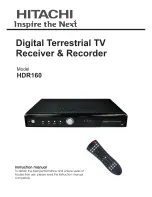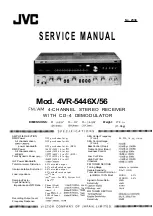
– 2 –
TABLE OF CONTENTS
1.
GENERAL
Location of controls ........................................................
3
Resetting the unit ............................................................
4
Detaching the front panel ................................................
4
Setting the clock ..............................................................
4
Labelling the rotary commander .....................................
4
Using the rotary commander ..........................................
5
Adjusting the sound characteristics ................................
5
Attenuating the sound .....................................................
5
Changing the sound and display settings .......................
5
Adjusting the frequency of the subwoofer (S) ...............
5
Adjusting the sound and
frequency of the equalizer ..............................................
5
Changing the line output level ........................................
5
Installation .......................................................................
6
Connections .....................................................................
7
2.
DISASSEMBLY
.........................................................
9
3.
ASSEMBLY OF MECHANISM DECK
........... 11
4.
MECHANICAL ADJUSTMENTS
....................... 14
5.
ELECTRICAL ADJUSTMENTS
Test Mode ........................................................................ 14
Tape Deck Section .......................................................... 14
Tuner Section .................................................................. 15
6.
DIAGRAMS
6-1. Block Diagram – TUNER/TAPE Section – ................... 19
6-2. Block Diagram – MAIN Section – ................................. 21
6-3. Block Diagram
– DISPLAY/KEY CONTROL Section – ........................ 23
6-4. Block Diagram
– BUS CONTROL/POWER SUPPLY Section – ........... 25
6-5. Note for Printed Wiring Boards and
Schematic Diagrams ....................................................... 27
6-6. Printed Wiring Board
– Main Board (Component Side) – ................................ 29
6-7. Printed Wiring Board
– Main Board (Conductor Side) – .................................. 31
6-8. Schematic Diagram – Main Section (1/4) – ................... 33
6-9. Schematic Diagram – Main Section (2/4) – ................... 35
6-10. Schematic Diagram – Main Section (3/4) – ................... 37
6-11. Schematic Diagram – Main Section (4/4) – ................... 39
6-12. Printed Wiring Board – PANEL Section – .................... 41
6-13. Schematic Diagram – PANEL Section – ........................ 43
6-14. Printed Wiring Board
– SUB/INVERTER Section – ......................................... 45
6-15. Schematic Diagram – SUB/INVERTER Section – ........ 46
6-16. IC Pin Function Description ........................................... 50
7.
EXPLODED VIEWS
................................................ 54
8.
ELECTRICAL PARTS LIST
............................... 57
Flexible Circuit Board Repairing
• Keep the temperature of the soldering iron around 270 ˚C dur-
ing repairing.
• Do not touch the soldering iron on the same conductor of the
circuit board (within 3 times).
• Be careful not to apply force on the conductor when soldering
or unsoldering.
Notes on chip component replacement
• Never reuse a disconnected chip component.
• Notice that the minus side of a tantalum capacitor may be dam-
aged by heat.
Summary of Contents for XR-C8220
Page 3: ... 3 SECTION 1 GENERAL This section is extracted from instruction manual ...
Page 4: ... 4 ...
Page 5: ... 5 ...
Page 6: ... 6 ...
Page 7: ... 7 ...
Page 8: ... 8 ...
Page 31: ...XR C8220 43 44 6 13 SCHEMATIC DIAGRAM PANEL Section See page 28 for Waveforms Page 46 ...



































